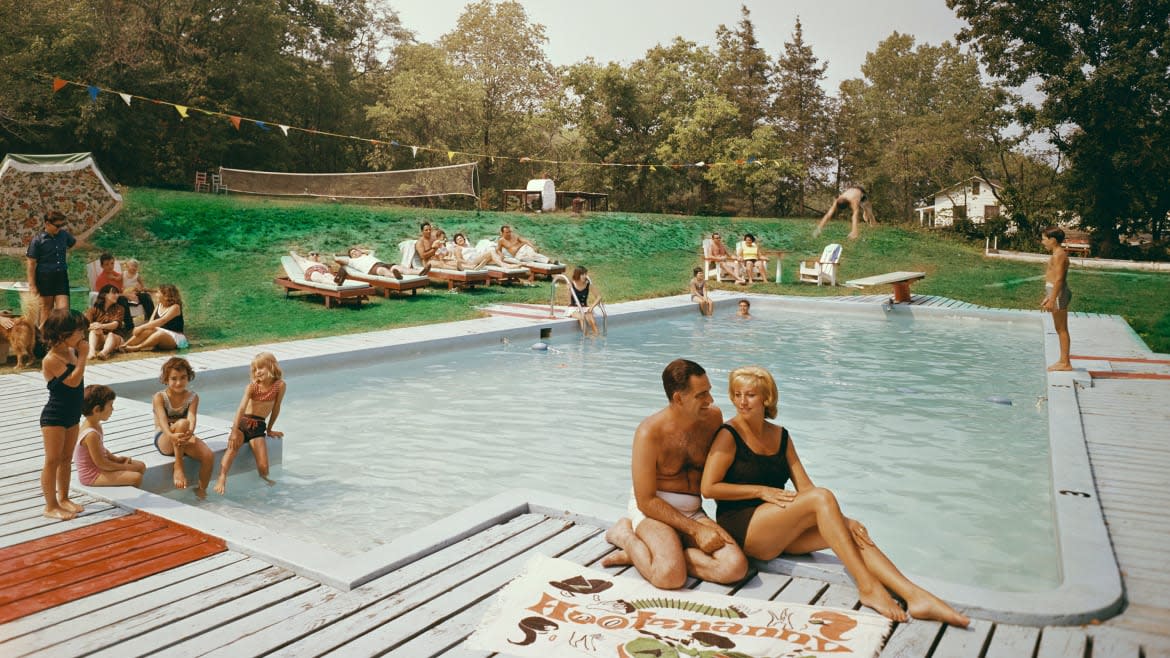The Coronavirus is Bad But Even During the Worst Pandemics, People Found Refuge

ROME—If there is one thing that has become abundantly clear since the outbreak of the novel coronavirus burst beyond mainland China, it is where not to go to get away. Cruise ships have proven to be the worst in petri dish travel for this particular virus, followed by northern Italy, which has sadly become the “Wuhan of Europe” after thousands of people who live or traveled to the popular region spread the virus to nearly 20 countries.
But, like in the times of perhaps mother of all pandemics, the Black Death, there are always places to get away from it all with a low risk of coming down with anything. In Italy, which has nearly 6,000 cases, the highest number outside Asia, people are fleeing to their country homes in droves and renting agricultural venues to escape the germ-filled cities. The Italian Association of Agritourism reports a slight bump in business for this time of year, which has countered the more than 75 percent cancellation rate the country’s cities have felt since Feb. 21 when the epidemic exploded.
Many who are taking refuge in the Italian countryside are following the prescription doled out in Giovanni Boccaccio’s 14th century collection of 100 short stories called The Decameron—mainly distraction. The book, based on a mix of fact and folklore, is told over 10 days during the plague, which had halved the population of Florence by 1348. Boccaccio creates seven male characters and three female characters who secretly meet in a church in Florence to plan a two-week quarantine getaway in a villa in Fiesole in the foothills above the city. There, they told stories, laughed, danced and, it would seem, had lots of sex without even mentioning the Black Death around them.
While social media and online news may make it impossible to completely escape the growing scourge, there are still some lovely areas that have always been destinations for healing, including a number of towns in the Swiss Alps that grew out of a need for fresh air during the tuberculosis epidemic of the late 1800s that killed one in seven people living in the U.S. and Europe at the time. One such notable spot is in Davos, now the site of the World Economic Forum. There the Hotel Schatzalp sits inside what was a luxury sanatorium built in 1900 for wealthy TB sufferers. Each room has a balcony facing the mountains where the sick would sit for brief periods of time to breathe in the cold air. They were fed up to five times a day since most TB sufferers died of “consumption” or weight loss due to the disease. The hotel still keeps the original x-ray room where doctors tended the patients as a tiny museum to its history.
In the U.S., TB— the so-called White Death—also took its toll, but it also put some areas on the map. For the same reason Europeans flocked to the Swiss Alps, many Americans went to the Rocky Mountains of Colorado where towns with names like Hygiene bear witness to the importance of the area at the time. Resorts that are now mostly given to skiers were built as TB sanatoriums and spas, where patients were called guests and treatments included live orchestras and in-house museums so they wouldn’t be starved of culture.
On the East Coast, Lake Saranac in a village in the Adirondack mountains of New York, once referred to as the Magic Mountain of America, offered a similar refuge as TB ravaged the region. Dr. Edward Livingston Trudeau, the great-grandfather of “Doonesbury” creator Garry Trudeau, traveled to a little red cabin there when he was sure he would die from the debilitating respiratory disease. Instead, he slowly got better and soon others, including artists, authors, poets, scientists, and even doctors who could afford it, went to the area to take in its curative properties. Over nearly a century, thousands of people traveled to Saranac, according to the book Saranac: America's Magic Mountain which traces its history.
But not all safe retreats served their purpose, as might well be the case of the brave new world in the time of the coronavirus. When the bacteria-based polio epidemic first gripped the children of New York City in 1916, the government authorities at the time blamed immigrants who were coming in via Ellis Island. The wealthy retreated to the Catskills to be safe from “the invaders.” But, as it was soon proven, polio knew no socio-economic boundaries, and by the time the epidemic ended, 9,000 cases and nearly 2,500 deaths had been tallied, including many who had locked themselves and their children into the Catskills resorts.
By the time COVID-19 has run its course and vaccines and cures are found, travel will almost certainly be the first sacrifice most people make. But, as in the case of the previous epidemics and pandemics, there may be safe places to wait this out. Time cures almost everything and history, as it is said, has a way of repeating itself.
Get our top stories in your inbox every day. Sign up now!
Daily Beast Membership: Beast Inside goes deeper on the stories that matter to you. Learn more.
